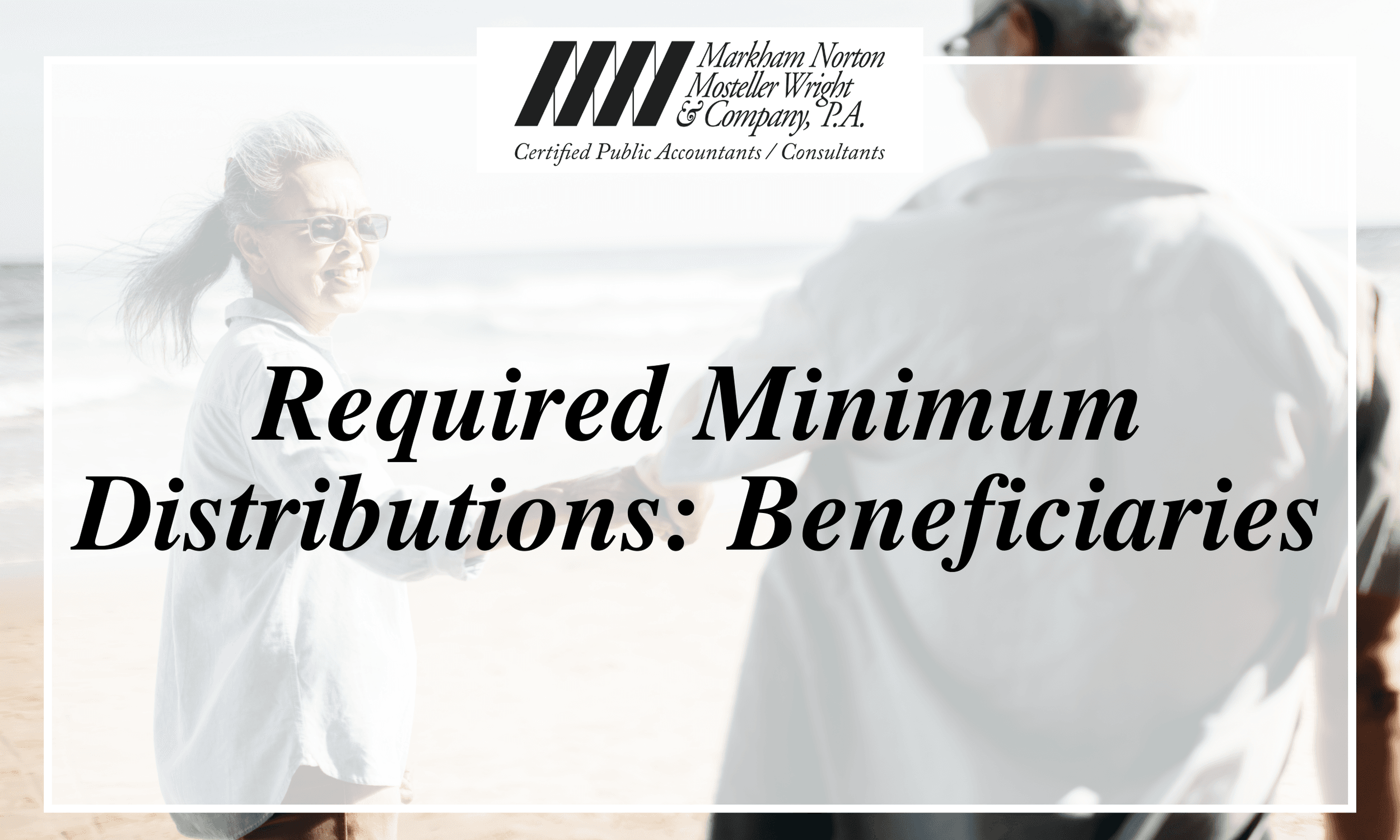Required Minimum Distributions: Beneficiaries
Beneficiaries of retirement plans and IRA accounts are subject to required minimum distribution (RMD) rules. The SECURE Act changed how and when beneficiaries who are individuals must take distributions for account owner deaths after 2019. There were no changes to the RMD requirements for beneficiaries where the account owner died prior to 2020 or to beneficiaries that are not individuals.
Distributions to beneficiaries from qualified retirement plans
If the distribution is from a qualified retirement plan, such as a 401(k) or profit-sharing plan, the plan document establishes the distribution options available to satisfy the RMD rules. A spousal beneficiary will generally have more options available to them in the plan than a non-spouse beneficiary. Beneficiaries should contact the plan administrator to learn about their distribution options in a qualified plan.
Distributions to beneficiaries from inherited IRAs
Spousal beneficiaries – Death of the account owner after 2019
If death occurred prior to the required beginning date, spousal beneficiaries have two options:
- Roll over the account into their own IRA
- Treat as their own IRA
- Take distributions based on their own age
- Distributions from their own IRA are subject to the 10% additional tax on early distributions
- Keep as an inherited account
- Must take distributions based on their own life expectancy, or
- Follow the 10-year rule
- Not subject to the 10% additional tax on early distributions
If death occurred after the required beginning date, spousal beneficiaries have two options:
- Roll over the account into their own IRA (only if spouse is sole beneficiary)
- Treat as their own IRA
- Take distributions based on their own age
- Subject to the 10% additional tax on early distributions before age 59½
- Keep as an inherited account
- Must take distributions based on their own life expectancy or the decedent’s life expectancy, whichever is longer
Non-spouse beneficiary – Death of the account owner after 2019
Options for a beneficiary who is not the spouse of the deceased account owner depend on whether they’re an “eligible designated beneficiary” or a designated beneficiary. An eligible designated beneficiary is
- Surviving spouse
- Minor child of the deceased account holder (must follow 10-year rule after reaching age 21)
- Disabled or chronically ill individual
- Individual who is not more than 10 years younger than the IRA owner or plan participant
An eligible designated beneficiary may
- Take distributions over the longer of their own life expectancy and the account owner’s remaining life expectancy, or
- Follow the 10-year rule (if the original account owner died before their required beginning date)
Designated beneficiary (not an eligible designated beneficiary)
- Follow the 10-year rule
Non-designated beneficiary (for example a charity or estate)
- Follow the 5-year rule if the owner died before distributions were required to begin
- Take distributions over the life expectancy of the original owner if they died after distributions were required to begin
Resources
The IRS released Notice 2023-54 that provides that certain non-spouse beneficiaries subject to the 10-year distribution rule will not fail the RMD requirements because they didn’t make distributions in 2023. Notice 2022-53 stated the IRS will not treat a beneficiary of an inherited account in a plan or IRA who was subject to the 10-year rule and who failed to take an RMD for 2021 and 2022 as having failed to take the correct RMD
For more detailed information on the changes made to beneficiary distributions by the SECURE Act and how these changes interact with the CARES Act, please visit IRS.gov/RMD and Publication 590-B, Distribution from Individual Retirement Arrangements (IRAs)
Source: IRS Employee Plans News
___________________________________________
Our firm provides the information on our blog/vlog for general guidance only, and does not constitute the provision of legal advice, tax advice, accounting services, investment advice, or professional consulting of any kind. The information provided herein should not be used as a substitute for consultation with professional tax, accounting, legal, or other competent advisors. Before making any decision or taking any action, you should consult a professional advisor who has been provided with all pertinent facts relevant to your particular situation. Tax articles on this website are not intended to be used, and cannot be used by any taxpayer, for the purpose of avoiding accuracy-related penalties that may be imposed on the taxpayer. The information is provided “as is,” with no assurance or guarantee of completeness, accuracy, or timeliness of the information, and without warranty of any kind, express or implied, including but not limited to warranties of performance, merchantability, and fitness for a particular purpose.


